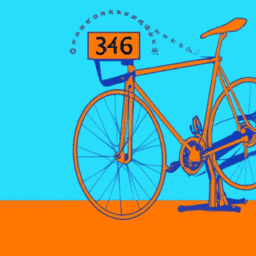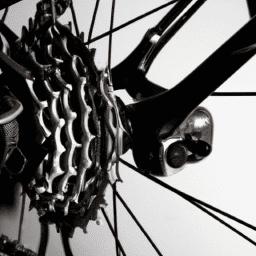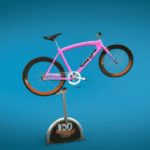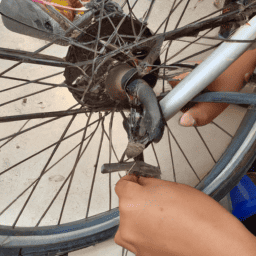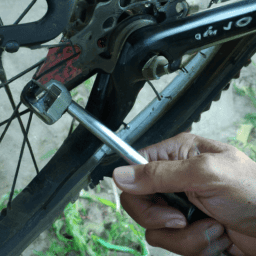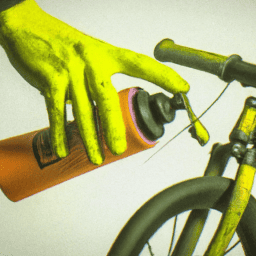For many years, I’ve harbored a passion for cycling, and a recurring query I’ve encountered is, “what’s the average weight of a bicycle?” Providing an answer to this inquiry is more complex than one might initially believe.
There are many factors that can affect a bike’s weight, including the type of bike, the materials used to make it, and the components that are installed on it.
Understanding bike weight is important for a few reasons. First and foremost, it can affect your performance on the bike. A heavier bike will be harder to pedal and will require more effort to maintain a consistent speed. Additionally, if you’re planning to transport your bike by car or public transportation, the weight of the bike can also be a consideration.
In this article, we’ll explore the average weight of different types of bikes, as well as some tips for reducing bike weight.
Key Takeaways
- Bike weight is an important factor that affects performance and transportation.
- Materials, components, suspension systems, and tires/wheels all impact bike weight.
- Carbon fiber, titanium, and aluminum are commonly used lightweight materials for road bikes.
- A lighter bike offers benefits such as easier climbing, increased speed and agility, and greater comfort.
Understanding Bike Weight
You’ll feel the difference in your legs when you ride a heavy bike uphill, so it’s important to understand how much your bike weighs. The weight of your bike can have a significant impact on your overall performance, especially if you’re a serious cyclist.
The heavier your bike, the more energy you’ll need to exert to propel it forward. This can be a major disadvantage, especially when you’re competing or trying to ride faster and longer distances. That’s why many cyclists opt for lighter bikes.
Lightweight bikes offer several advantages, including improved maneuverability, easier handling, and faster acceleration. They’re also less likely to cause fatigue, which can be a major concern on longer rides. Additionally, lighter bikes tend to be more aerodynamic, which can help you ride faster and more efficiently.
These benefits make it clear why understanding bike weight is important for any cyclist. Moving on to the next section, let’s take a look at the average weight of road bikes.
Average Weight of Road Bikes
If you’re looking for information on the weight of road bikes, it’s important to consider factors such as the materials used and the components included. Road bike designs have evolved over the years to become lighter and more aerodynamic, with manufacturers using lightweight materials such as carbon fiber, titanium, and aluminum to achieve this.
The weight of a road bike can also vary depending on the size of the frame, with smaller frames typically being lighter than larger ones. To give you an idea of the average weight of a road bike, here are four examples based on different materials and components:
- A carbon fiber road bike with high-end components can weigh as little as 14 pounds.
- An aluminum road bike with mid-range components can weigh around 18 pounds.
- A titanium road bike with mid-range components can weigh around 20 pounds.
- A steel road bike with entry-level components can weigh around 25 pounds.
As you can see, the weight of a road bike can vary quite a bit depending on the materials and components used.
In the next section, we’ll take a look at the average weight of mountain bikes.
Average Weight of Mountain Bikes
As a cycling enthusiast, I’ve come to appreciate the importance of understanding the average weight of mountain bikes.
One key factor that contributes to a mountain bike’s weight is its suspension system. This can range from a basic front suspension fork to a full suspension system that includes a rear shock.
Another important factor is the type of tires and wheels used. Wider tires and more durable rims can add weight to the bike.
Finally, the frame material also plays a role. Carbon fiber is a lighter option than aluminum or steel.
Understanding these factors can help riders make informed decisions when choosing a mountain bike that fits their needs and riding style.
Suspension Systems
The weight of a bicycle can be significantly affected by its suspension system, with heavier systems adding to the overall weight of the bike. There are various types of suspensions, each with their own pros and cons.
The two main types of suspension systems are:
-
Front Suspension: This type of suspension, also known as a suspension fork, is located on the front wheel. It is designed to absorb shock and vibrations that come from the front wheel hitting obstacles like rocks and potholes. The pros of this system are that it provides better control and comfort to the rider. However, the cons are that it adds weight to the bike and can be expensive to repair if damaged.
-
Full Suspension: This type of suspension, also known as a dual suspension, is located on both the front and rear wheels. It is designed to absorb shock and vibrations from both wheels hitting obstacles. The pros of this system are that it provides better control and comfort to the rider, as well as improved traction and handling. However, the cons are that it adds significant weight to the bike and can be more expensive to purchase and maintain.
The suspension system is just one factor to consider when looking at the weight of a bike. Another important factor is the weight of the tires and wheels. However, before delving into that, it’s important to understand how the suspension system affects the weight of a bike.
Tires and Wheels
When you choose lighter tires and wheels for your bike, you will notice a significant decrease in the overall weight and improved speed and agility while riding. The weight of your bike’s tires and wheels can have a significant impact on the overall weight of your bike. Tubeless tires generally weigh less than clincher tires because they don’t require an inner tube. The lack of an inner tube also means that you can run tubeless tires at lower pressures, which can increase traction and improve the overall ride quality.
The materials used in the rims of your bike’s wheels can also impact the weight of your bike. Generally, carbon fiber rims are lighter than aluminum rims, but they are also more expensive. However, carbon fiber rims can also be more durable and provide better performance in certain conditions. When choosing rims, it’s important to consider your riding style and the conditions you’ll be riding in to determine the best option for you. With lighter tires and wheels, your bike will be easier to ride and more responsive, allowing you to enjoy your time on the road or trail even more. Now, let’s explore how different frame materials can impact your bike’s weight.
Frame Materials
As we discussed in the previous section, the composition of a bicycle’s tires and wheels can significantly impact its weight. However, another crucial factor that affects the weight of a bicycle is the frame material. The materials used in constructing the frame can vary, with each having its unique characteristics that affect the bike’s weight, durability, cost, and performance.
When it comes to frame materials, the four most commonly used are aluminum, carbon, steel, and titanium. Here’s a brief overview of each material:
-
Aluminum: This material is lightweight, affordable, and stiff, making it an excellent option for entry-level bikes. However, it can be less comfortable than other materials due to its rigidity.
-
Carbon: Carbon is the lightest and most expensive material, offering excellent strength, stiffness, and shock absorption. It’s commonly used in high-end road bikes and mountain bikes.
-
Steel: Steel is durable, comfortable, and affordable, making it a popular option for touring, commuting, and adventure bikes. However, it’s heavier than aluminum and carbon.
As you can see, the frame material plays a significant role in determining a bicycle’s weight. In the next section, we’ll delve deeper into the average weight of hybrid bikes, taking into account the factors we’ve discussed so far.
Average Weight of Hybrid Bikes
When it comes to hybrid bikes, understanding the average weight is crucial for choosing the right bike for your needs. The weight of a hybrid bike can vary depending on the frame materials used, the tire size and width, and the components.
In my experience, the weight of a hybrid bike typically ranges from 20 to 30 pounds, with aluminum frames being the most common and lightweight option.
Frame Materials
The weight of a bicycle can vary greatly depending on the type of frame material used, with some materials being significantly lighter than others. Here are some key differences between the most commonly used frame materials:
-
Carbon vs. Aluminum: Pros and Cons
- Carbon frames are the lightest and most expensive, but also the most fragile and difficult to repair.
- Aluminum frames are less expensive and more durable, but also heavier than carbon and can produce a harsher ride quality.
-
Titanium vs. Steel: Which is Better?
- Titanium frames are lighter than steel but heavier than carbon and aluminum, and also more expensive.
- Steel frames are the heaviest of the four materials, but also the most affordable and durable, with a smoother ride quality.
Understanding the differences between these frame materials can help you make an informed decision when choosing a bicycle that meets your specific needs and preferences.
Moving on to the next subtopic, tire size and width can also greatly impact the weight and overall performance of a bicycle.
Tire Size and Width
Choosing the right tire size and width can greatly enhance your bike’s performance and handling, creating a smooth and efficient ride. It’s important to consider the terrain you’ll be riding on and your personal preferences when selecting tire size and width.
Wider tires have become increasingly popular due to their advantages. They provide a larger contact patch with the ground, increasing both grip and stability. Additionally, wider tires can absorb more shock and vibration, resulting in a more comfortable ride.
When selecting tire size and width, it’s important to consider tire pressure and weight correlation. The pressure of your tires greatly impacts performance and handling. Too little pressure causes drag and makes riding more difficult, while too much pressure makes the ride feel harsh and uncomfortable.
The weight of your tires also impacts the overall weight of your bike. Heavier tires provide more puncture protection, but they can make the bike feel sluggish and difficult to maneuver. Keep in mind the impact of tire size and width on your bike’s overall performance as we move on to the next section on components.
Components
Just like how every organ plays a crucial role in the functioning of the human body, each component of a bike is essential for a smooth and safe ride. The handlebar grips, for instance, provide comfort and control, ensuring a firm grip on the handlebars. Meanwhile, the saddle comfort is a crucial factor in determining the level of comfort during a long ride.
Here are some other critical components that affect the weight of a bike:
-
Frame Material: This is one of the most significant contributors to a bicycle’s weight. Carbon fiber frames are the lightest, followed by aluminum and steel frames.
-
Wheels: The weight of the wheels is also a crucial factor. Lighter rims and spokes can significantly reduce the weight of a bike.
-
Drivetrain: The drivetrain includes the chain, gears, and pedals, which are responsible for the bike’s propulsion. A lighter drivetrain means less weight to pedal.
-
Brakes: The type of brakes can impact the weight of the bike significantly. Disc brakes are generally heavier than rim brakes.
Reducing the weight of your bike can improve your riding experience and make it easier to maneuver. In the next section, we’ll discuss some tips for reducing bike weight without compromising on safety and performance.
Tips for Reducing Bike Weight
Reducing your bike’s weight can greatly improve your cycling performance and make riding more enjoyable. One of the easiest ways to reduce weight is by investing in lightweight accessories. Consider switching out heavy components such as your saddle, handlebars, and pedals for lighter options. The weight savings may seem small, but they can add up and make a noticeable difference in your ride.
Proper maintenance is another important aspect of reducing bike weight. Keep your bike clean and well-oiled to prevent rust and corrosion, which can add unnecessary weight. Regularly check your tire pressure and ensure that your brakes are functioning properly, as these can also affect your bike’s weight and performance. By taking these steps, you can achieve a lighter, more efficient ride and enjoy the benefits of improved performance and comfort.
| Pros of a lighter bike | Cons of a heavier bike | ||
|---|---|---|---|
| Easier to climb hills | Slower acceleration | ||
| Less strain on joints | Harder to transport | ||
| Increased speed and agility | More difficult to handle in windy conditions | ||
| Improved overall performance | Requires more effort to maintain speed | ||
| Greater comfort on long rides | |||
| More enjoyable riding experience | Can be more expensive than traditional bicycles |
Frequently Asked Questions
What are the benefits of having a lighter bike?
Riding a lighter bike provides efficiency benefits by reducing the effort required to pedal and increasing speed. Maneuverability advantages are also gained as the bike is easier to handle and control. Imagine effortlessly gliding through the streets.
Does the weight of a bike affect its speed?
The weight of a bike can significantly affect its speed, as it can impact both aerodynamics and the amount of energy required to pedal. Balancing weight and aerodynamics is crucial for optimal performance.
How does the weight of a bike affect its durability?
When considering bike weight and durability, material choices and frame design play a crucial role. Lighter materials such as carbon fiber can reduce weight, but may sacrifice durability. A well-designed frame can balance these factors, ensuring both optimal weight and durability.
Are there any disadvantages to having an extremely lightweight bike?
When it comes to extremely lightweight bikes, there are pros and cons to consider. While they can improve performance in certain situations, they may also sacrifice durability and stability. It’s important to weigh the impact on performance before making a decision.
Can the weight of a bike be adjusted after purchase?
Yes, the weight of a bike can be adjusted after purchase. This can be done by changing components or adding/removing accessories. However, adjusting weight can have an impact on performance, particularly in terms of acceleration and handling.
Conclusion
So there you have it, folks. The average weight of a bicycle can vary significantly depending on the type of bike you’re looking at.
Road bikes tend to be the lightest, with an average weight of around 17 pounds, while mountain bikes can weigh anywhere from 25 to 35 pounds. Hybrid bikes fall somewhere in the middle, typically weighing between 20 and 25 pounds.
Of course, it’s important to remember that weight isn’t everything when it comes to bikes. While a lighter bike may be easier to handle and faster to ride, there are other factors to consider, such as durability, comfort, and performance.
Ultimately, the best bike for you will depend on your personal preferences and the type of riding you plan on doing. So, whether you’re a serious cyclist or just looking to enjoy a leisurely ride around town, make sure to choose a bike that meets your needs and fits your budget.
